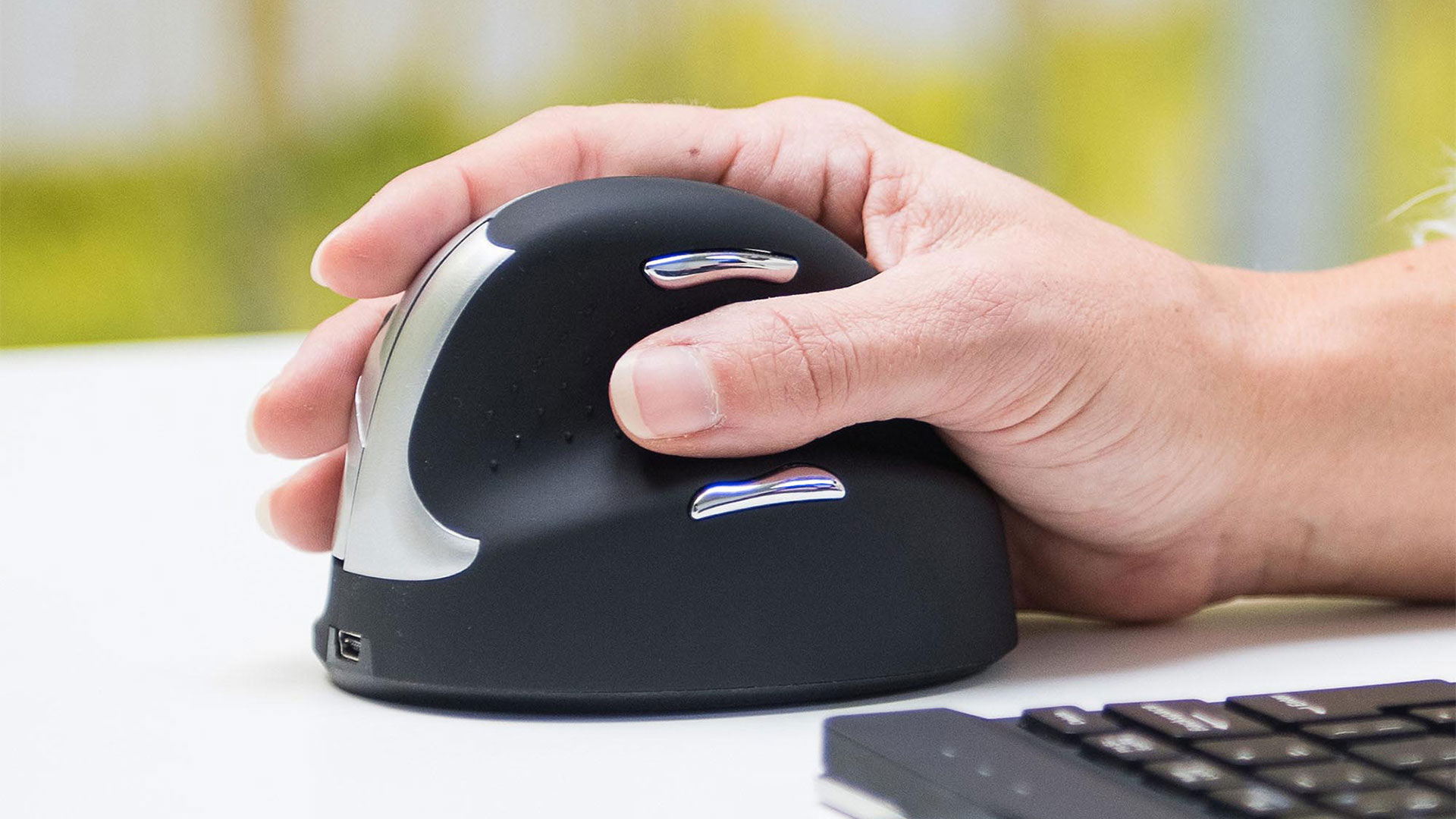
4 Ergonomic Mouse Benefits and How to Use It Properly
Table of Contents
Could you be missing out on the benefits of an ergonomic mouse? The regular mouse could be slowing you down, damaging your muscles and nerves, causing wrist pain.
You rely on the mouse for navigation; it forces you to move in unnatural, uncomfortable, and even unhealthy ways. Right now, you may be experiencing muscle tension, but that discomfort means something is wrong. Not only are you missing out on ergonomic mouse benefits, but you could also be doing long-term damage to your arms, wrists, and hands.
What is an Ergonomic Mouse?
An ergonomic mouse is a mouse that fits the human body. It lets you keep your arms, wrists, elbows, and hands in a natural position. Some ergonomic mice have a classic shape. They’re designed to mirror your hands in a weightless environment.
The rise in computer use for work exposes employees to technological diseases, including carpal tunnel syndrome as well as the “mouse shoulder.”
Fortunately, using an ergonomic mouse can reduce the risk of developing many of these conditions. An ergonomic mouse can even boost your productivity and work performance.
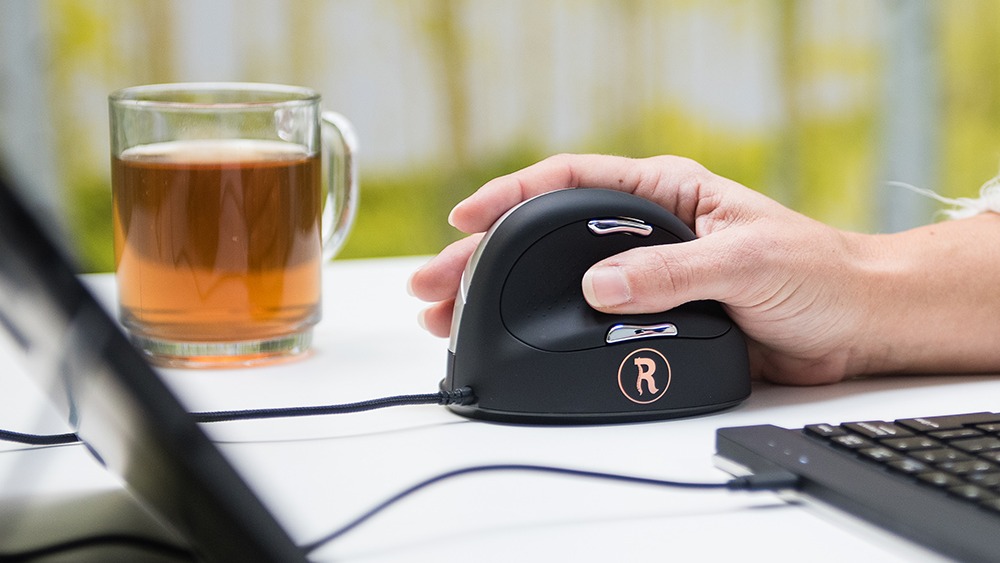
Why is an Ergonomic Mouse Is an Important Office Accessory?
1. Minimizes the Risk of Mouse Arm Syndrome
Probably, you don’t think that your office job can put you at risk of injury, but using a regular mouse frequently does that. An ergonomic mouse reduces the risk of mouse arm syndrome. Mouse arm syndrome refers to different injuries that cause neck, arm, shoulder, and hand pain, and this is caused by repeated mouse use.
A study by the National Center for Biotechnology Information (NCBI) concluded that frequent use of non-ergonomic computer mice causes extreme discomfort in the muscle and tendon system of the hand. Mouse arm can result in numbness and tingling in the aching forearms, fingers, wrists, elbows. It can also cause shoulder pain, neck stiffness, and loss of hand flexibility. As time goes by, the pain becomes more intense and harder to reverse.
Fortunately, using an ergonomic mouse prevents the inflammation from occurring. With an ergonomic mouse, you no longer have to hold your wrist, fingers, arm, shoulders, and elbows in a cramped position. An ergonomic mouse fits your body, and you need not contour your body into unnatural positions throughout the workday.
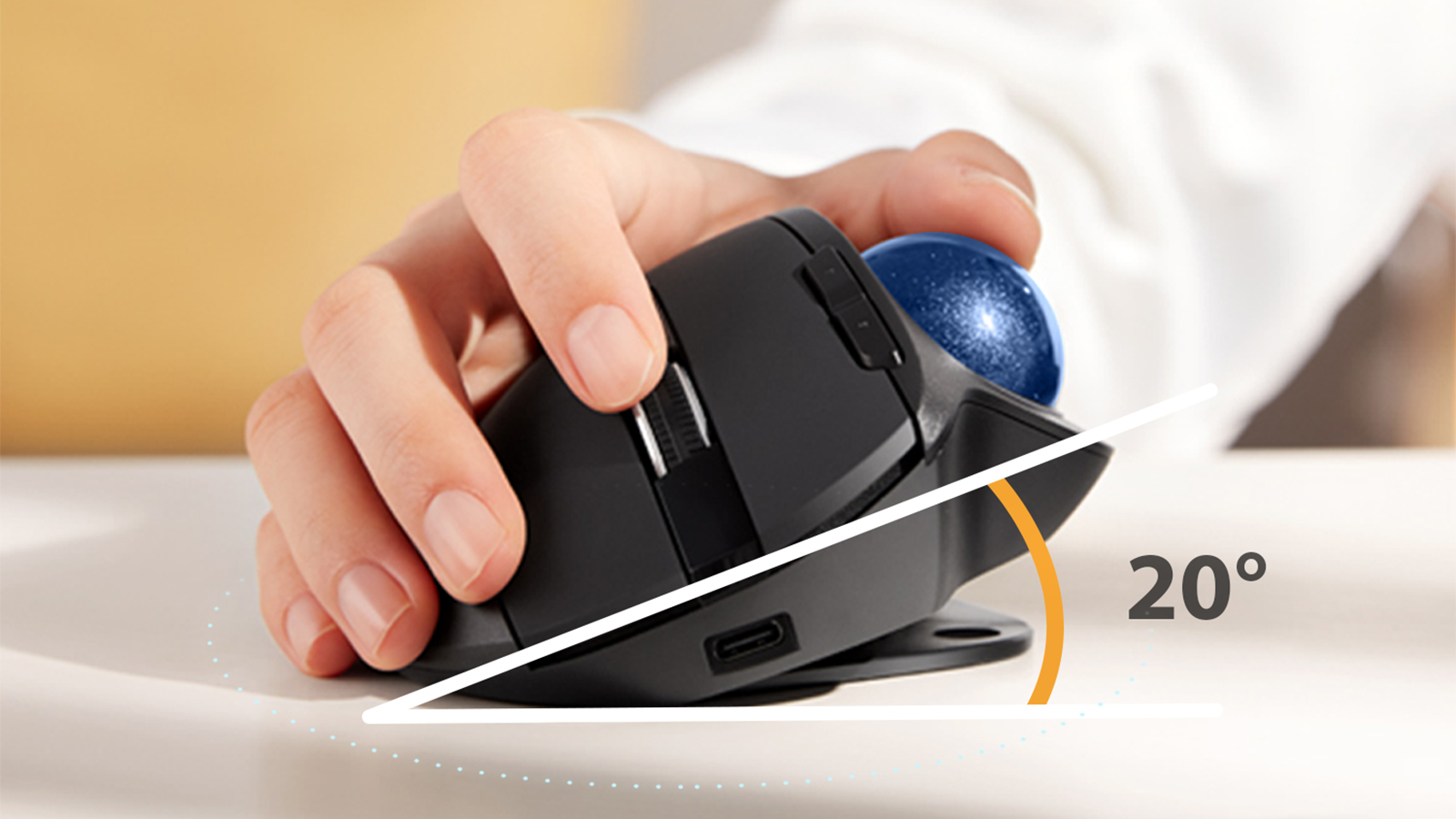
2. Eliminates Carpal Tunnel and RSI
When using a computer mouse, your dominant hand leaves the keyboard and your elbow and shoulder rotate out. This forces you to twist your forearm to hover your hand around your mouse. Also, you stretch your fingers and wrap them around the mouse to reach for the scroll wheel or the buttons. Thus, the entire time you’re using the mouse, your arms remain twisted. This exerts tension on your wrists and other joints. Over time, this repetition can result in carpal tunnel syndrome or repetitive strain injury (RSI).
Both ailments cause pain in the forearm, wrist, elbow, hand, neck, and shoulder. The more mental-intensive your job is, the more the damage could be. A study by the National Institute of Public Health found that when participants had increased mental demand, they also had increased muscular activity, ultimately speeding up the damage.
An ergonomic mouse can reduce existing wrist pain, preventing the development of Carpal Tunnel or RSI. It reduces the range of motion needed for operation, allowing you to extend your hands and arms naturally.
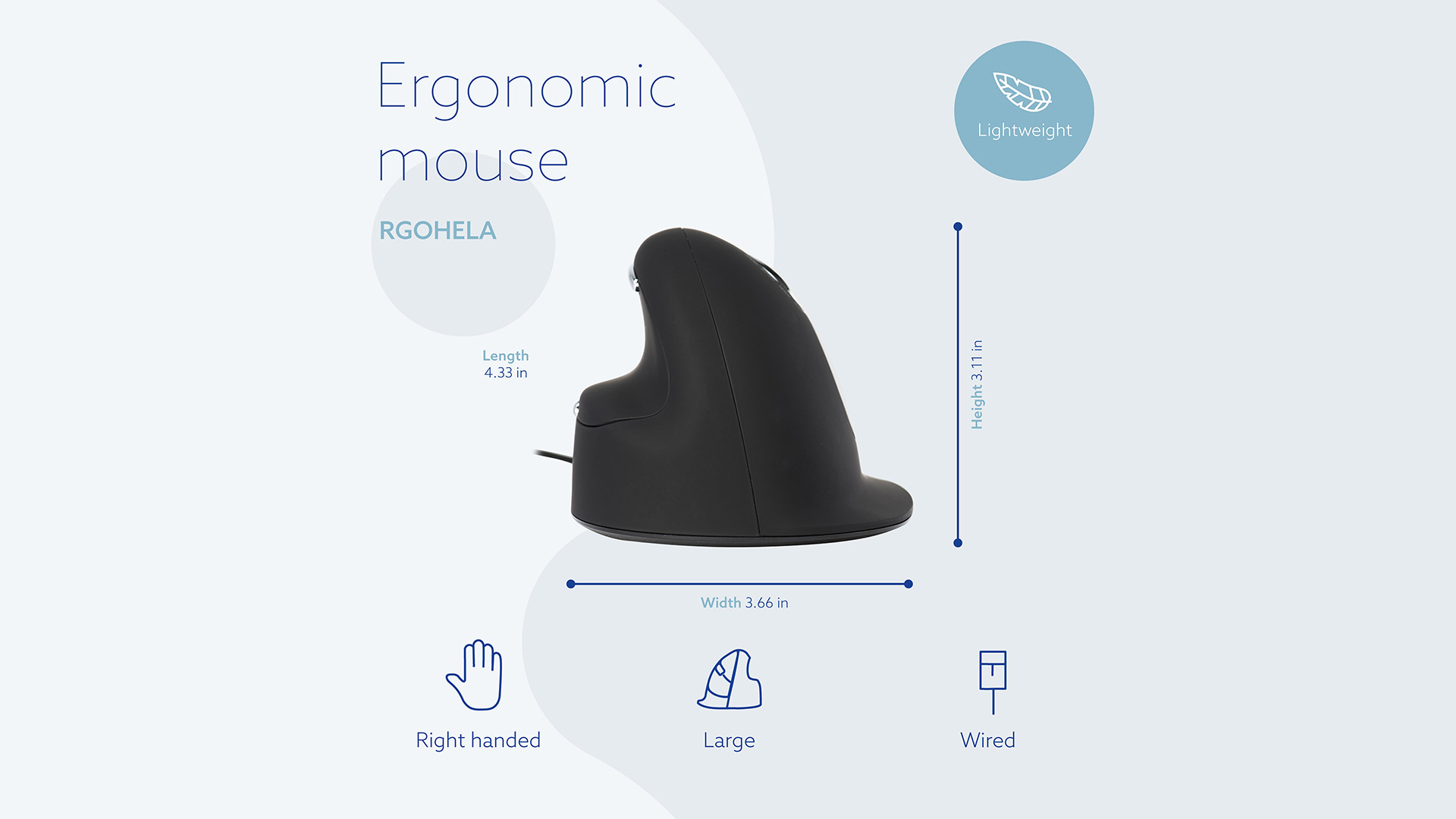
3. More Comfort for Those Suffering from Arthritis
The regular mouse is bad for everyone, but it can be more painful, especially if you have arthritis. If you already have joint inflammation, the last thing you should do is twist, stretch, or strain your muscles.
An ergonomic mouse features a vertical design or an optimized angle to prevent wrist pronation. Its contours allow your fingers to rest instead of straining to reach buttons. Referring to a mouse sizing guide can help you find the best ergonomic mouse perfect for your hands.
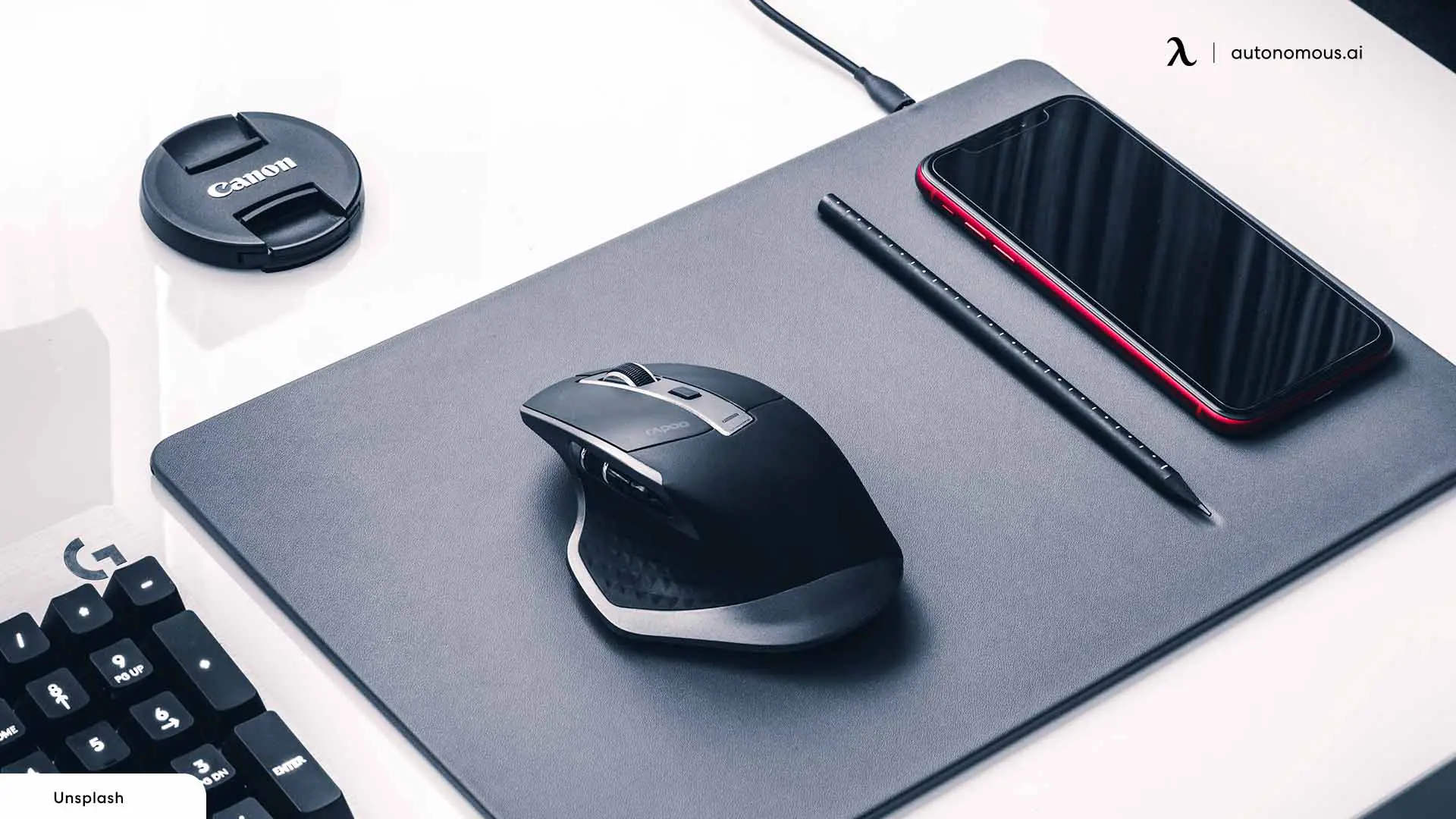
4. Reduces Fatigue
After a long day at work, do you always feel drained, wiped out, and exhausted? If your office environment makes you uncomfortable, you get fatigued from repetitive tasks and long hours. Mental and physical fatigue makes you more prone to illness, and it becomes hard for you to deal with stress. Luckily, switching to an ergonomic mouse can melt away all the fatigue because there’s no strain.
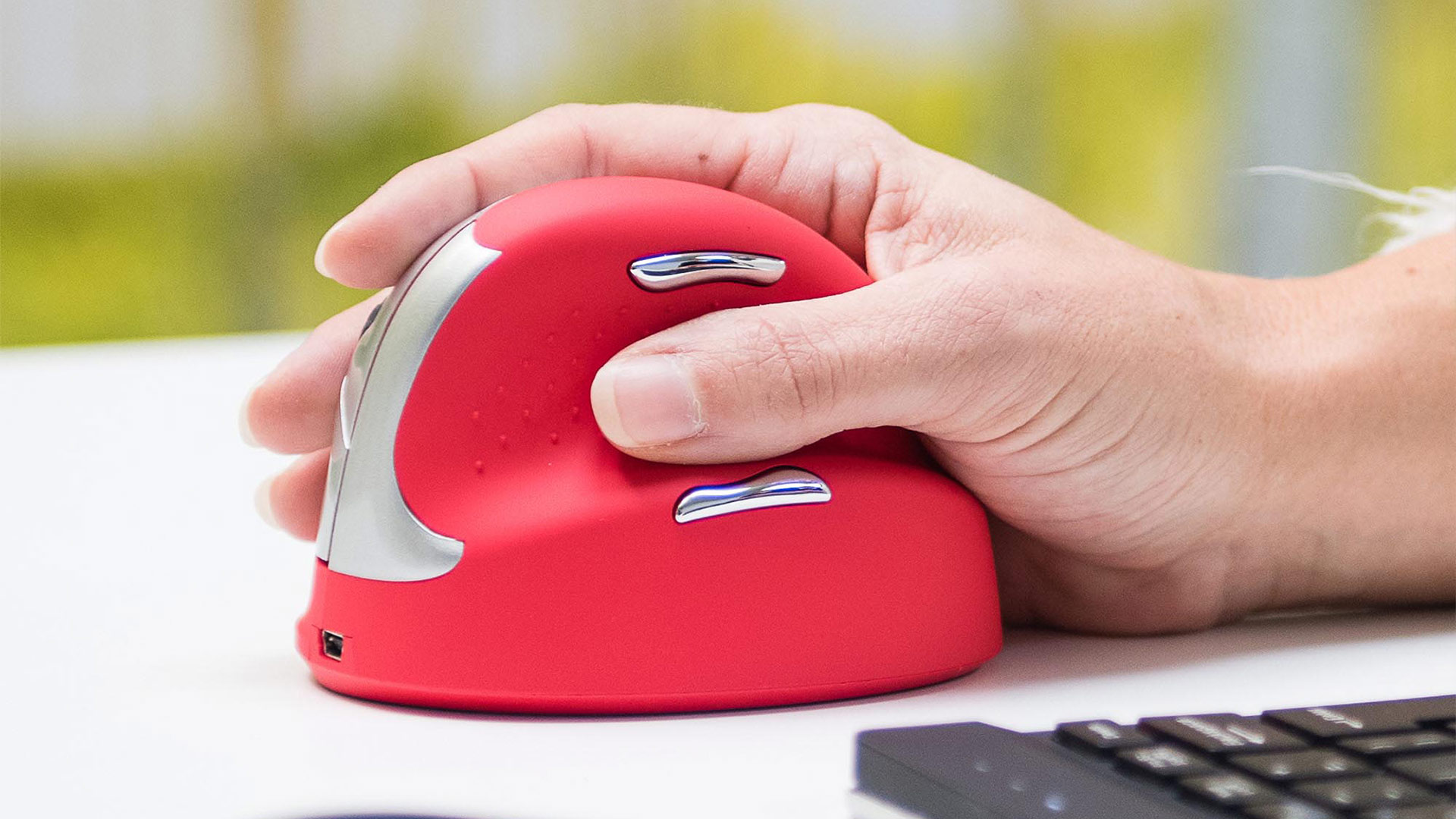
How to Hold an Ergonomic Mouse Properly to Reap Maximum Benefits
Holding an ergonomic mouse is straightforward enough. The shape of the mouse naturally guides your hand and wrist into a handshake position as you hold on to the mouse. However, keep these things in mind to enjoy the maximum benefits of an ergonomic mouse:
- Relax your fingers on the mouse, including your thumb.
- Rest the weight of your wrist on your hand and the side of your pinky finger.
- Make sure there’s little pressure or contact on the soft underside of your wrist.
- Bend your elbows at 90 degrees.
- Take regular breaks!
Further, there are two ways on how to hold an ergonomic computer mouse properly:
- First method: Rest your entire forearm on your desk. Then, pivot from your elbow as you lift your forearm slightly off your desk to operate the mouse. This keeps your wrist completely still throughout, protecting the median nerve. However, this requires a large working surface that can accommodate your entire forearm.
- Second Method: Move the ergonomic mouse just like a regular mouse, by pivoting your wrist back and forth. This is more energy-efficient than pivoting your elbow. However, this method doesn’t completely protect your wrist and median nerve, but it’s an enormous improvement instead of operating a traditional mouse where you pronate your forearm throughout.
Theoretically, using the first method at all times is ideal, but it’s not viable for a long time for some people, or when you’re working in a small space. Thus, the verdict on the best way to use an ergonomic mouse is that good ergonomics always involve some level of personalization to find what works perfectly for you. So, when buying an ergonomic mouse find one that’s customizable to your needs.
.svg)







